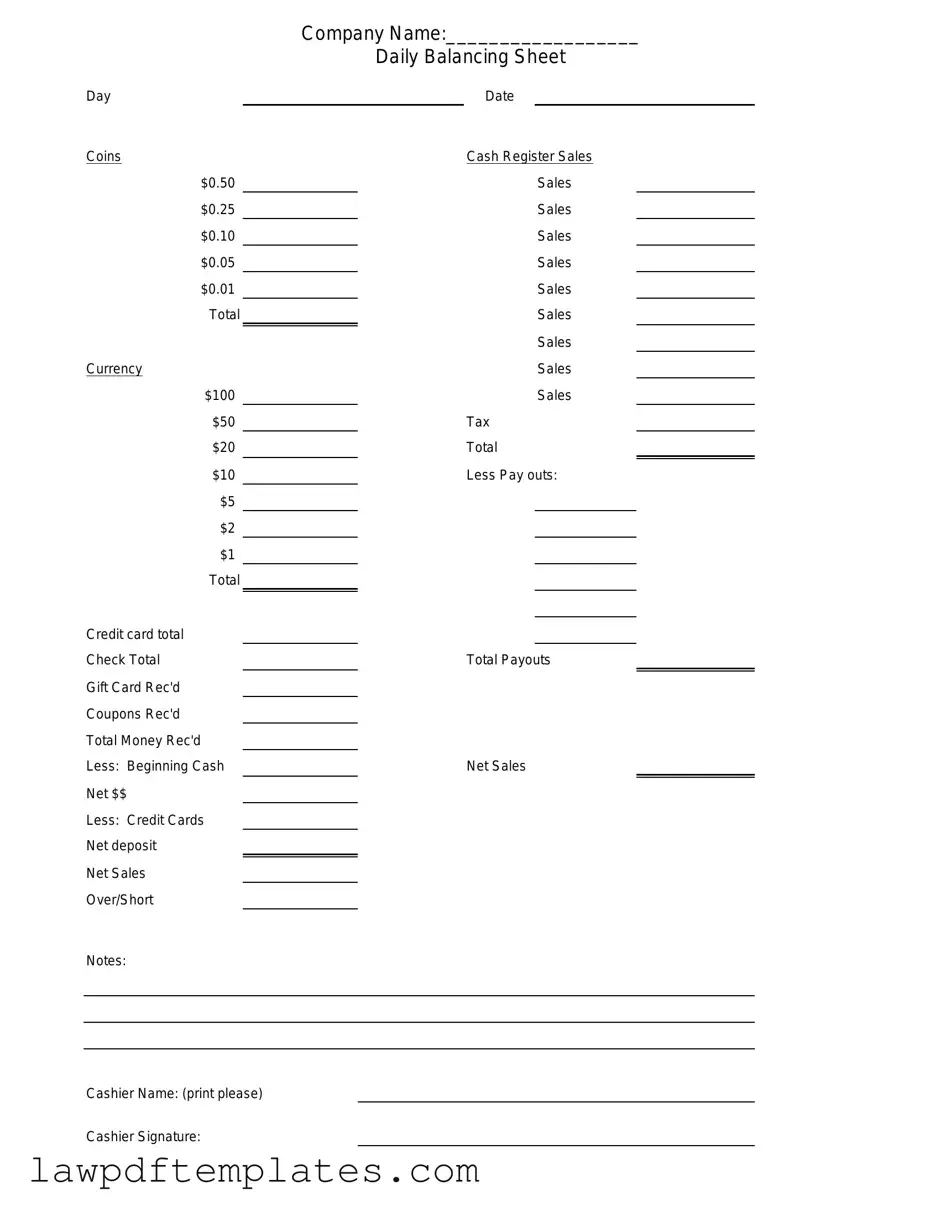Filling out a Cash Drawer Count Sheet is an essential task for maintaining accurate financial records. However, many individuals make common mistakes that can lead to discrepancies and complications. One frequent error is failing to record the starting cash balance correctly. This initial amount serves as a reference point for all subsequent calculations. If the starting balance is inaccurate, it can skew the entire count, resulting in confusion and potential financial issues.
Another mistake often encountered is neglecting to document all cash transactions throughout the day. Every sale, return, and cash handling activity should be recorded meticulously. Omitting any transactions can lead to an incomplete picture of the cash flow, making it difficult to reconcile the drawer at the end of the shift. This oversight can also raise questions during audits or financial reviews.
In addition, individuals sometimes miscalculate the total cash at the end of the counting process. Simple arithmetic errors can occur, especially when working quickly or under pressure. It is crucial to double-check calculations to ensure accuracy. A small mistake in totaling can result in significant discrepancies, leading to time-consuming investigations to resolve the issue.
Another common pitfall is not having a clear process for handling discrepancies. If the counted cash does not match the expected total, it is vital to have a systematic approach to investigate the difference. Failing to address discrepancies promptly can lead to unresolved issues and potential trust problems with management or auditors.
Finally, individuals may overlook the importance of signatures on the Cash Drawer Count Sheet. Proper documentation requires that both the person conducting the count and a supervisor or manager sign off on the form. This step not only provides accountability but also ensures that there is a record of who was responsible for the cash count. Skipping this can lead to disputes about responsibility in the event of a cash shortfall.

